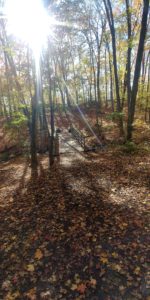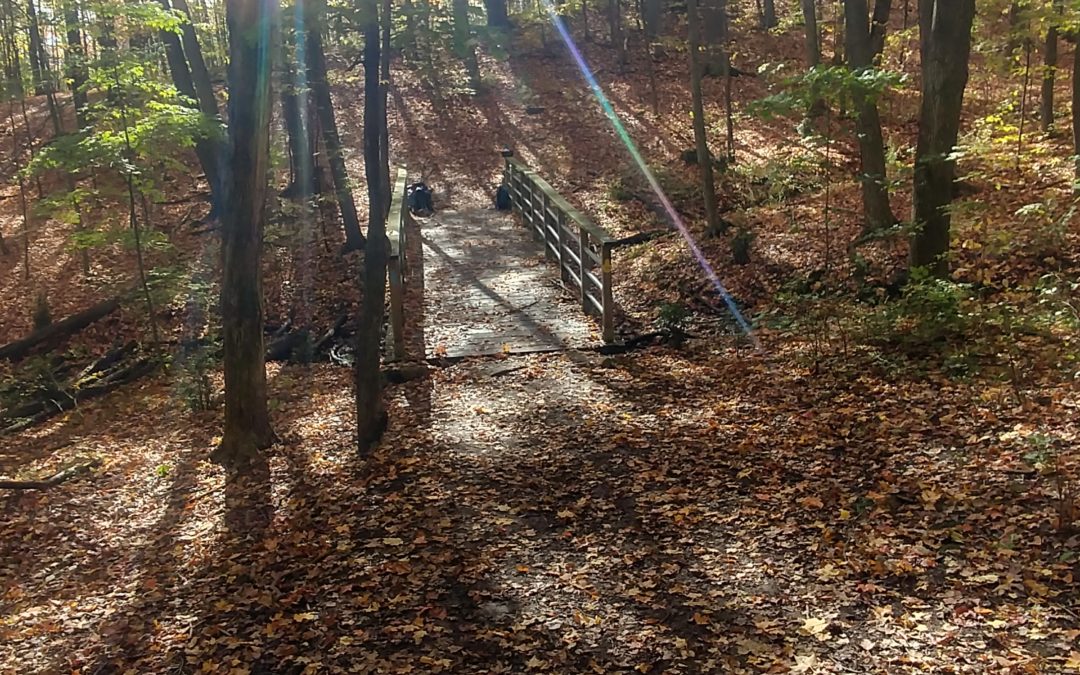After writing my blog post Disconnection in Some of Us Hurts All of Us, I shared it with my We Learn Naturally co-inspirers before sharing it publicly. It’s so nice to have a support network to bounce ideas off of when I am feeling vulnerable. Chelsea wondered how to inspire more connection in groups that are united in common interests, Tanya observed that disconnection can feel contagious, Julie reiterated how disconnection is such a huge part of our culture, and Carolyn brought up how separation is part of our natural experience (like a mother and baby separating during childbirth) and how disconnection is a learned cultural practice. With all of these thoughts about connection swirling around, my week began. I thought I would tuck this theme away (perhaps this is an example of my cultural expression of disconnection?) but the theme is so big, it continued to show its relevancy.
 On Tuesday, City School went to Simpler Thyme Organic Farm. After a lovely tour lead by Ann and Charles, Ann shared that their beautiful farm was suffering from disconnection. The trees in their forest that produce maple syrup were dying earlier than expected because they were disconnected from a larger tapestry of healthy forest. The highway and roads that separated her farm from other forests and trees and the lack of tree roots connecting one end of the farm to the other meant that the soil was not as fertile or productive. Ann has Alzheimer’s and mentioned that she struggled sometimes to share her thoughts but as she described her farm and forest, she clearly articulted the importance of mycelia, the fungus that acts as a communication conduit and bridge between the trees and living things on the farm. Trees use mycelium to communicate their needs to one another so that they can support one another in their growth and protection. Without the connector mycelium, the trees are standing together yet alone and unable to meet their common needs in healthy, sustainable ways. They struggle to warn each other of diseases and pests and they cannot offer each other stored water during periods of drought or nturients to make the collective of trees stronger. Ann mentioned that her forest was slowly moving North each year, as a way to find cooler weather in our changing climate but with its slow growth, her forest could not realistically protect itself from climate change and the effects would e compounded because her forest was lacking without healthy connection through mycelia. I had read The Hidden Life of Trees by Peter Wohlleben about a year ago which described the role of mycelium, so this real life discussion about mycelium was so interesting to me.
On Tuesday, City School went to Simpler Thyme Organic Farm. After a lovely tour lead by Ann and Charles, Ann shared that their beautiful farm was suffering from disconnection. The trees in their forest that produce maple syrup were dying earlier than expected because they were disconnected from a larger tapestry of healthy forest. The highway and roads that separated her farm from other forests and trees and the lack of tree roots connecting one end of the farm to the other meant that the soil was not as fertile or productive. Ann has Alzheimer’s and mentioned that she struggled sometimes to share her thoughts but as she described her farm and forest, she clearly articulted the importance of mycelia, the fungus that acts as a communication conduit and bridge between the trees and living things on the farm. Trees use mycelium to communicate their needs to one another so that they can support one another in their growth and protection. Without the connector mycelium, the trees are standing together yet alone and unable to meet their common needs in healthy, sustainable ways. They struggle to warn each other of diseases and pests and they cannot offer each other stored water during periods of drought or nturients to make the collective of trees stronger. Ann mentioned that her forest was slowly moving North each year, as a way to find cooler weather in our changing climate but with its slow growth, her forest could not realistically protect itself from climate change and the effects would e compounded because her forest was lacking without healthy connection through mycelia. I had read The Hidden Life of Trees by Peter Wohlleben about a year ago which described the role of mycelium, so this real life discussion about mycelium was so interesting to me.
 Driving home from the farm, down Highway 6, I couldn’t help but think of all of the roads across Canada that have cut up the mycelium for our forests and wildlife, making it harder for our ecosystems to be healthy and respond to the stresses humanity has created for the natural world. I thought about trees living together but feeling disconnected and isolated and how they end up living less full, less healthy lives. The human paralell of that is humans living together in cities and towns without really connecting. Without that connection to ourselves and each other, we feel sad, lonely, and depressed.
Driving home from the farm, down Highway 6, I couldn’t help but think of all of the roads across Canada that have cut up the mycelium for our forests and wildlife, making it harder for our ecosystems to be healthy and respond to the stresses humanity has created for the natural world. I thought about trees living together but feeling disconnected and isolated and how they end up living less full, less healthy lives. The human paralell of that is humans living together in cities and towns without really connecting. Without that connection to ourselves and each other, we feel sad, lonely, and depressed.
 When I got home I found articles about mycelium. This article was one of my favorites and here are some of the highlights I found most interesting. Without mycelium, plants cannot reach maturity. The same is true for us! Without human connection, we don’t reach maturity. We stay locked in our own worlds perhaps unable to meet our own needs and assume that others should meet them on our behalf. Or we may make attempts to meet our needs by making demands instead of an approach that uses connection and negotiation so that we can understand how all of our needs can be met. Our species got to where we are because of our ability to work together. Without connection, we are stunted in our growth and development.
When I got home I found articles about mycelium. This article was one of my favorites and here are some of the highlights I found most interesting. Without mycelium, plants cannot reach maturity. The same is true for us! Without human connection, we don’t reach maturity. We stay locked in our own worlds perhaps unable to meet our own needs and assume that others should meet them on our behalf. Or we may make attempts to meet our needs by making demands instead of an approach that uses connection and negotiation so that we can understand how all of our needs can be met. Our species got to where we are because of our ability to work together. Without connection, we are stunted in our growth and development.
Mycelium has the potential to break down harmful toxins in the environment and turn them into useable nutrients for our ecosystem. Similarly, healthy human connection has the potential to help us work through the challenges that often feel “toxic” in our culture. In university I remember reading about Emile Durkheim’s sociological explanation of suicide; that the rate of social interaction and the strength of social interaction were predictors in a person’s propensity for suicide and depression. Reading about Anthony Bourdain and Kate Spade lead me to read this opion piece which comes to the same conclusion. Although people may suffer from chemical imbalances, social connection can help people who suffer from anxiety and depression make it through their most challenging times. Connection has the potential to help us to survive, overcome, and heal. In fact, a study cited in the opinion piece suggests that when we overcome and share our experiences, our experiences become useful for others to find their path out. In that sense, human connection helps us to make the difficult feelings into helpful information. Our ability to walk through darkness helps others to find light too.
This fungus can be used to build new structures and possibly even help us to inhabit a new planet. Extending this metaphor once again, I wonder what human connection could help us build? If we were to learn how to communicate our needs with authenticity and clarity, perhaps more of our needs would be met. With more needs met, we could potentially have more people who feel whole and capable of contributing. If we connect to one another and drop the superficiality, perhaps we could find a place to accept a wider range of human characteristics, thus encourgaing human creativity and innovation. I wonder what we could accomplish if each of us felt valued and safe and free? The possibilities are exciting!
Thanks for joining me as I played with this idea. I’d love to hear your thoughts. Did I miss anything? Did you make some connections that I didn’t write about? If this post was too metaphycial for you, I’ll try to scale it back in my future post entitled Recalibrating After Disconnection. (Link to follow.)

